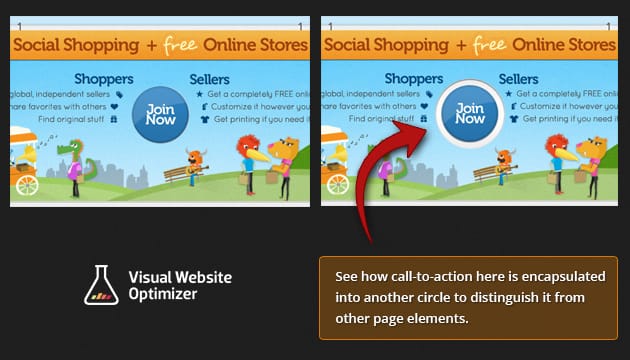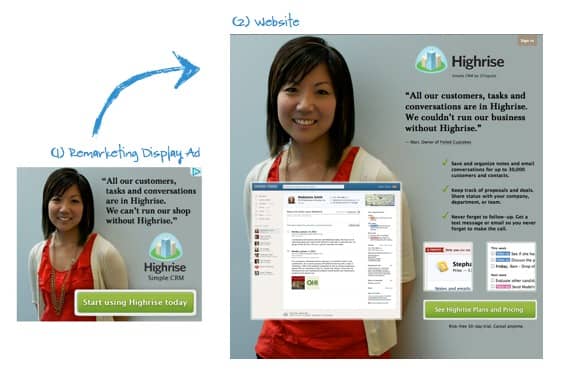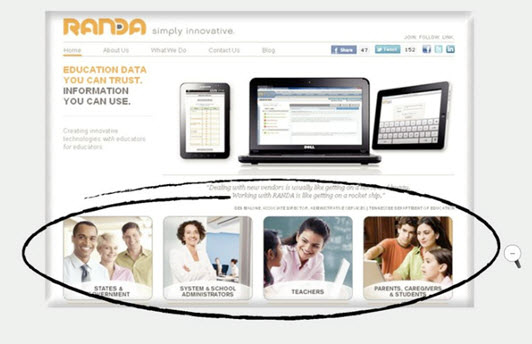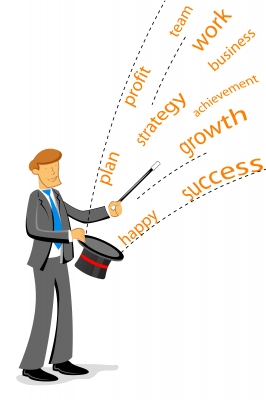
- A yellow button will always outperform a blue one
- Putting your opt-in form in the right sidebar is best practice, and
- The words ‘click here’ kill the competition when it comes to calls to action.
But here’s a tip: If anyone ever tries to tell you the ‘secret formula’ to a high-converting website, RUN! We’ve worked with enough websites to know that the only way to know how a particular element or page will perform is to test it. We’ve challenged a lot of traditional advice by the “gurus”, and have found that many times, something can work for one industry or era, but will yield an opposite result in another. With that said, there are some things you can do that, generally speaking, have a good chance of increasing your conversion rates. At the very least, I’d suggest testing each of the suggestions below and see what happens. Here are 8 of my top tips for increasing your conversion rates, while at the same time providing a better overall user experience on your site.
1. Use Social Proof

2. Make your Call to Action (CTA) Clear and Prominent
There is so much I could say about your call to action! It’s perhaps one of the most important factors when it comes to conversion rate optimisation (CTA). Testing your CTA buttons through split testing is an extremely important task that many website owners neglect to do. Yet it’s also one of the simplest and quickest elements to test, and yields some of the biggest returns. Some tips for optimizing your calls to action include:
- Trying different button colours. Generally speaking, the more contrast you have with your CTA button relative to the rest of the page, the better the results.
- Trying different button text. Sometimes you’ll find that simpler is better. For instance, “click here” may outperform longer, more action-oriented copy like “click to get started now”. In other cases, longer more benefit-driven copy will be better; be sure to test!
- Trying different button placements. You may find something as simple as moving your CTA button from below the fold to above the fold will increase your conversion rates.
Another tip is to make sure your CTA button stands out from other images on your page. It may be obvious to you which button is the CTA, but to a website visitor who’s only on your page for a few seconds, calling special attention to your most important button can make a big difference. The folks at Visual Website Optimizer even suggest encapsulating your CTA button to help distinguish it from other images and page elements.
3. Make Sure Your Fonts are the Optimal Size
Font size can have a surprising impact on bounce rates, time-on-site, and believe it or not, even conversion rates. In a simple test, one company found that simply increasing their website’s font size increased conversions by almost double (from 1.08% to 2.22%). 
4. Content Should Meet Expectations
When crafting your content, it’s important to consider how your website visitors will find this particular page. For instance, will they come across this page as a result of:
- A link from your homepage?
- A PPC ad?
- A Facebook link?
- A referral from another site?
- Organic search?
A helpful practice is to carefully consider the main source of traffic to your page, and to clearly meet the expectations of these visitors. For instance, if you expect the largest source of traffic to your page will be an AdWords display ad, it’s critical that your landing page ties in with your ad copy and image.
Image courtesy of Conversion XL
If the look and feel of the page doesn’t match their expectations, they may feel misled or even ‘duped’, and are unlikely to stay on the site (never mind following through to the point of conversion!).
5. Use Segmentation to Further Meet Expectations
To take #4 a step further, consider segmenting your content based on user interests, level-of-knowledge, role, or geographic location. Not only does this take ‘meeting expectations’ up a notch, it provides a stellar user experience and enables you to present content to visitors that meets them exactly where they’re at in the online buying cycle.
6. Consider Using Live Chat
Walking customers through the purchase process using live chat can result in up to a 10% increase in conversion rates. And even for visitors who choose not to use live chat, simply knowing it’s available can help build trust and increase the likelihood of a purchase at a later point in time.
According to Crazy Egg, not only can implementing live chat on your site increase conversion rates, but it can also increase the average customer order value.
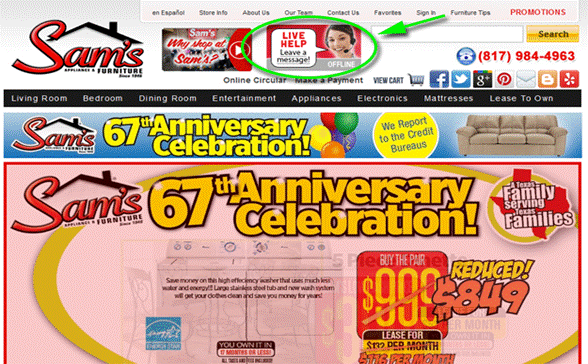
7. Minimize the Steps and Time to Conversion
How long does it take your visitors to convert from the time they land on your site? How many steps do they need to take to make a purchase? How many form fields do they need to fill in to complete a quote request form? These are all important considerations as your optimize your site for conversions. Generally speaking, each time a potential customer or client clicks on a link, fills out a field, or spends precious moments waiting for a page to load, the likelihood of a conversion decreases. Make the purchase process as simple and streamlined as possible so that your visitors don’t second-guess their decision, or give up because the process is taking too long.
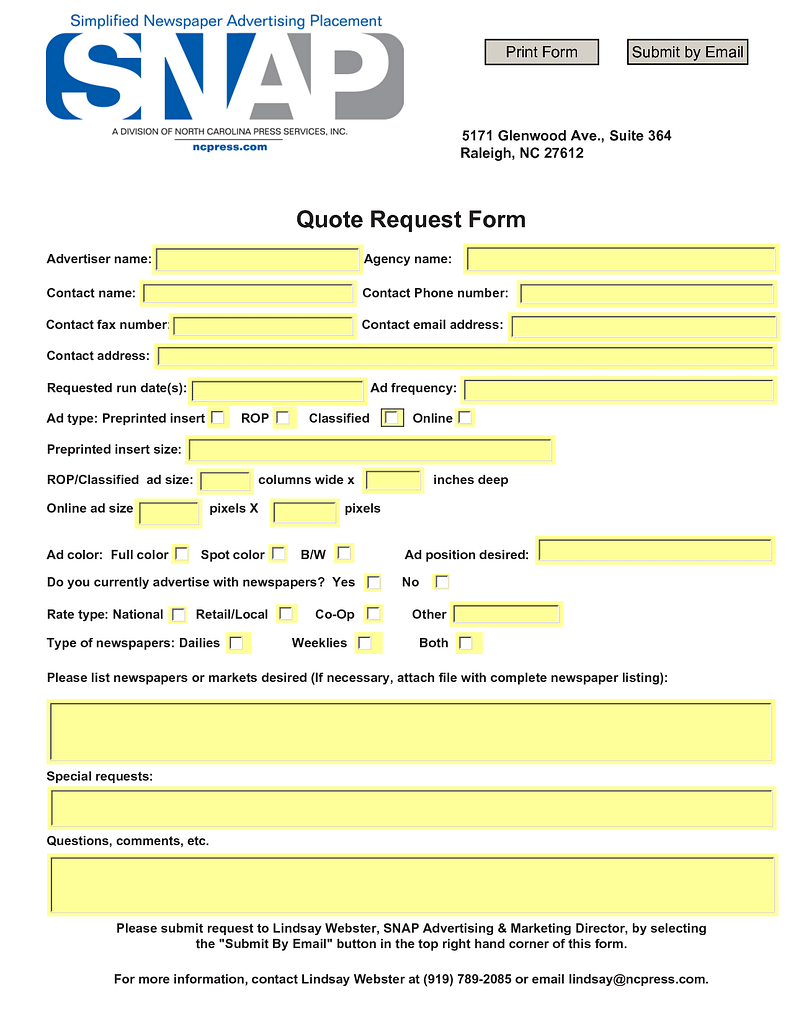
8. Create Single-Action Landing Pages for PPC visitors
This may seem like a no-brainer, but it’s still something I see PPC advertisers failing to do all too frequently. If you’re going to be investing money to get people to your site, make sure your landing page is unique and offers only one choice: to click on the call to action button. This means making sure your landing page is devoid of distracting sidebars, opt-in forms (unless that’s the goal on that page), banner ads, or links (although you will want to have certain internal links in a less prominent section of the page for Quality Score purposes – more on that in another article). Every page on your site should have a single focus, a single task you want your visitors to perform. But on PPC landing pages this is even more critical to keeping your visitors focused on the task at hand.
Increasing your conversion rates can be as simple as changing a font, a colour, or even a small piece of text. Don’t be afraid to experiment and think outside the box: you may be surprised how little work it takes to see a huge increase in conversions! What’s your top tip when it comes to conversion optimisation? Do you agree with the tips above? Let me know below!

call 1300 662 990 today
If you would like a professional team to help you optimise your website for conversions, please contact us for a free and confidential consultation


